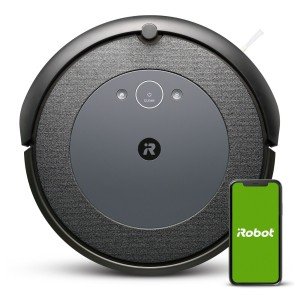15 Terms That Everyone Working In The Robotic Vacuums Industry Should Know
The Rise of Robotic Vacuums: A Comprehensive Overview
In today's busy world, innovation is consistently progressing to make our lives easier, and the home cleaning section has actually experienced among the most notable improvements: the robotic vacuum. This intelligent device not just saves energy and time but also guarantees a cleaner home environment with very little manual effort. This short article explores the fascinating development of robotic vacuums, how they work, their advantages and downsides, market patterns, and future directions.
The Evolution of Robotic Vacuums
Robotic vacuums have made excellent strides considering that their beginning in the late 1990s. The very first commercially available robotic vacuum was presented in 1996, followed by numerous models, each designed with escalating elegance and features. Here is a short timeline of robotic vacuum development:
Year
Occasion
1996
Release of the very first robotic vacuum (Electrolux's Trilobite)
2002
iRobot Roomba is released, making robotics mainstream
2010
Intro of sophisticated mapping and navigation functions
2017
Integration of AI and smart home compatibility
2022
Release of extremely advanced designs featuring self-emptying dustbins
How Robotic Vacuums Work
Robotic vacuums use a mix of sensors, algorithms, and expert system to browse areas successfully. Here's how they operate:
Navigation: Most robotic vacuums utilize a series of sensing units to detect challenges and navigate around furnishings. Some high-end designs integrate LIDAR (Light Detection and Ranging) innovation to develop comprehensive maps of the environment.
Cleaning Mechanisms: They are geared up with rotating brushes and suction systems to gather debris from different surfaces. Depending upon the model, they can shift in between carpets and difficult floorings effortlessly.
Smart Features: Many contemporary robotic vacuums are Wi-Fi made it possible for, allowing users to control them from another location via a smart device app. Features commonly consist of scheduling, mapping out cleaning paths, and combination with other smart home gadgets.
Self-Maintenance: High-end systems might include self-emptying capabilities, where the robot can dock itself to a base that collects dust and debris without human intervention.
Benefits of Robotic Vacuums
Robotic vacuums have actually amassed immense popularity, and for good factors. Here are a few of the most significant advantages:
- Time-Saving: Automating the cleaning procedure permits users to participate in other meaningful activities.
- Efficient Cleaning: Regular cleaning can be quickly achieved by scheduling the robot to clean everyday or weekly, keeping dirt and irritants at workable levels.
- Compact Design: Their little size allows them to fit under furnishings and in hard-to-reach places.
Regardless of their benefits, robotic vacuums likewise include limitations:
- Limited suction power: While they are efficient for preserving clean floors, they may not match the deep cleaning of conventional vacuums.
- Battery life: Most designs need to return to their dock after a specific period of use.
- Initial expenses: High-quality robotic vacuums can be expensive, though costs have actually been reducing with advancements in technology.
Existing Market Trends
The market for robotic vacuums is broadening rapidly. According to a recent marketing research report, the worldwide robotic vacuum cleaner market is anticipated to reach ₤ 7.2 billion by 2027, growing at a CAGR of 23.5%, driven by several factors:
Increased Adoption of Smart Home Devices
The rise of smart home innovation has actually encouraged customers to integrate robotic vacuums into their homes. Many robotic vacuums work seamlessly with home assistants like Amazon Alexa and Google Assistant, simplifying their operation.
Advances in Robotics and AI
As the technology behind robotic vacuums progresses, designs are being equipped with better navigation systems, AI algorithms for finding out personal cleaning habits, and improved functions for specific floor types.
Focus on Health and Hygiene
The increased awareness of cleanliness and hygiene, especially due to current international events, has driven customers to buy devices that regularly remove dust, irritants, and animal hair from their homes.
Future Directions
As technology advances, robotic vacuums are anticipated to evolve even more, incorporating features that increase their efficiency in households. Expected developments consist of:
- Improved AI Learning: With advancements in maker learning, future models will be better at comprehending their environment and adapting to the needs of their owners.
- Multi-Purpose Design: Potential future models might consist of features for mopping, decontaminating, and air purification in addition to vacuuming.
- Sustainability: As eco-consciousness increases, manufacturers are most likely to focus on energy performance, recyclable materials, and sustainable production practices.
FAQs About Robotic Vacuums
**1. Can robotic vacuums vacuum on carpet?Yes, many robotic vacuums can transition in between numerous floor types, including carpets and hard floors. 2. How typically should I run my robotic vacuum?It depends
on your family's cleaning requirements, but numerous users
arrange their robotic vacuums to run daily or every couple of days. 3. Are robotic vacuums worth the investment?For numerous customers, the time conserved and benefit used by robotic vacuums makes them worthwhile,
**
specifically for hectic families. 4. Can I control my robotic vacuum remotely? best affordable robot vacuum can be managed via a smartphone app, permitting scheduling and monitoring from anywhere. 5. Do I still need a standard vacuum cleaner?While robotic vacuums efficiently handle everyday cleaning, a traditional vacuum may still be essential for deep cleans up or toughermesses. The development of robotic vacuums shows a considerable leap in automating housework, combining innovative innovation with user-friendly operation. As the pattern towards smart homes continues and customer expectations evolve, robotic vacuums will likely keep enhancing, supplying ever-greater convenience and efficiency in keeping tidy living spaces. As bagless robot vacuum consider the potential advantages and limitations of these gadgets, it is clear that robotic vacuums have strengthened their credibility as invaluable tools in contemporary home management. 